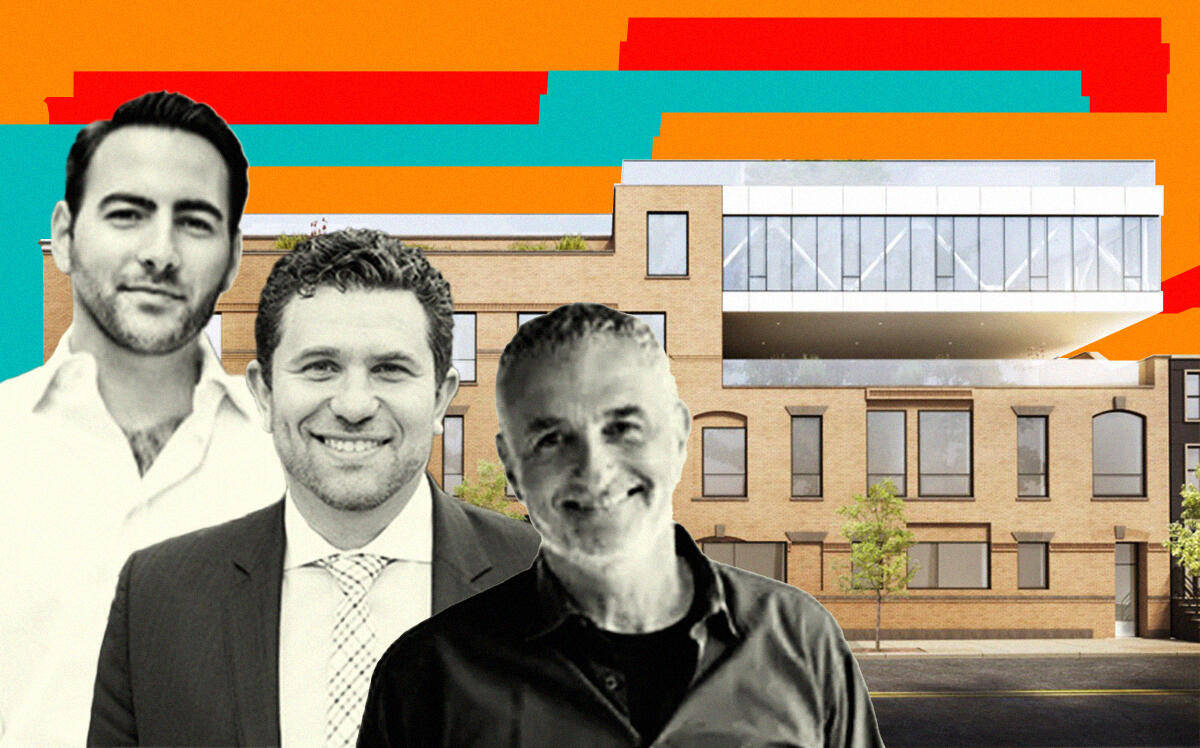 Oh, Citysnap! CoStar-backed platform hopes to unseat StreetEasy
Oh, Citysnap! CoStar-backed platform hopes to unseat StreetEasy
Trending
East Williamsburg’s resi market reaches new heights
New development notches PPSF and condo price record as neighborhood rises

To a casual observer, East Williamsburg may not seem like an obvious place for luxury residential projects.
Flatbed trucks rumble down Metropolitan Avenue on their way to and from Queens industrial yards, billowing dust and exhaust over graffiti-covered buildings home to functioning warehouses and nightlife venues alike.
Amid the stretch of warehouses stands the Milk Factory, a luxury development of 32 condos at 850 Metropolitan Avenue. Behind its sand-colored and glass facade is a notable arrival: it has the neighborhood’s most expensive condo unit and another unit that scored the highest price per square foot for any property type. While some of that success can be attributed to the building itself, the new peak comes amid a swell of interest in the neighborhood.
It’s similar to the scene that unfolded in Williamsburg about a decade ago, when Manhattanites looking for a price break decided to hoof it one stop across the East River. Now, buyers looking for a bargain compared to Williamsburg are setting their sights just one stop down the L train line.
“There was a sense of buyers not wanting to be in the hustle and bustle of prime, waterfront Williamsburg or close to Bedford, [but rather] wanting to be in an area that was Williamsburg 10 years ago,” said Louis Adler, co-founder of Real New York, who was tapped to lead sales at the building. “Restaurants, bars, mom and pop shops, I think that’s what’s pulling people in.”
Many of those restaurants sit in the industrial area to the south of Metropolitan, pockmarking a landscape of steel roll-up doors and rich, brightly colored murals coating the factory buildings.
ROART, the architecture firm and developer behind the Milk Factory, founder Ran Oron pointed to the creep of business as the first wave of interest that would beckon new residential arrivals.
“I’m a big believer in following food trends,” Oron said. “When you see people opening good food places that are not cheap it says a lot to me.”
Read more
 Oh, Citysnap! CoStar-backed platform hopes to unseat StreetEasy
Oh, Citysnap! CoStar-backed platform hopes to unseat StreetEasy
The neighborhood, the borders of which have been the subject of much debate, is nestled on Google Maps below the Brooklyn Queens Expressway and north of Flushing Avenue, bound to the west by Bushwick Avenue and stopped to the east by Newtown Creek.
Many of the highest sales — and much of the new development — in East Williamsburg are clustered near the Graham Avenue stop on the L line just over the border from North Williamsburg. That trend will continue for the foreseeable future, as dozens of units have been approved for Conselyea and Powers Street.
The average sale price in East Williamsburg is up more than 9 percent year over year, according to data from TRD Pro, while North Williamsburg has seen an increase over 11 percent over the same period.
Milk Factory, named for the site’s roots in production for a nostalgia appeal, offers a microcosm of the market’s swell.
Unit 4D closed August 1 with a record price-per-square-foot of $1,667. Units 2I and 4C rank third and fourth, respectively, according to an analysis of city data provided by TRD Pro. Unit 4A, which closed in September 2020, sold for $2,057,000, giving it the highest trading price in the neighborhood for a condo, though some multifamily buildings have sold for more.
The neighborhood, where homes sell for about $500,000 less on average than its trendier nearby area, in recent years marked popularity with first-time homebuyers. That was the case with Sean Curneen, a Corcoran broker who has sold condos at 42 Maspeth Avenue since 2015, and expected sales to remain below the $1 million mark.
“I guess we all sort of thought that was going to be the high water mark in pricing,” Curneen said.
Now, more seasoned buyers and investors are coming in, said Eugene Litvak, a Compass broker with listings in the neighborhood.
“There’s obviously some really beautiful projects that got built there because of the cost of the land, you’re able to do some things you can’t do in Williamsburg,” Litvak said. “It’s still got a ways to go, there’s going to be more development.”




